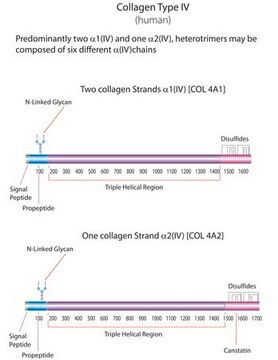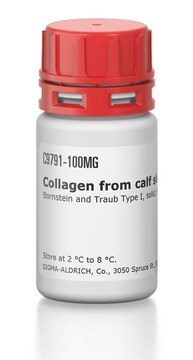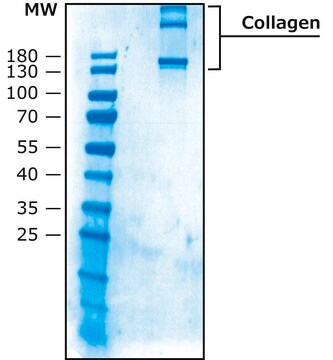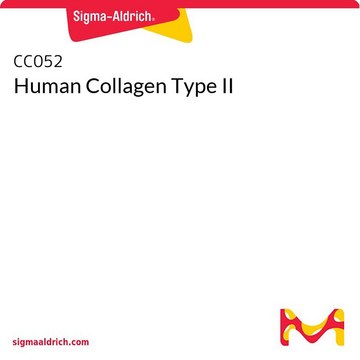234138
Human Collagen Type I
from human skin, powder
Synonym(s):
Collagen, Type I, Human Skin
About This Item
Recommended Products
Product Name
Collagen, Type I, Human Skin,
biological source
human skin
Quality Level
Assay
≥95% (SDS-PAGE)
form
lyophilized
manufacturer/tradename
Calbiochem®
storage condition
OK to freeze
dilution
(compatible for the preparation of collagen gels)
impurities
≤0.1% subdermal hair
solubility
acetic acid: 5 mg/mL (0.5M)
shipped in
ambient
storage temp.
2-8°C
General description
Application
Biochem/physiol Actions
Warning
Physical form
Preparation Note
Reconstitution
Other Notes
Legal Information
Disclaimer
Storage Class Code
11 - Combustible Solids
WGK
WGK 1
Flash Point(F)
Not applicable
Flash Point(C)
Not applicable
Regulatory Listings
Regulatory Listings are mainly provided for chemical products. Only limited information can be provided here for non-chemical products. No entry means none of the components are listed. It is the user’s obligation to ensure the safe and legal use of the product.
JAN Code
234138-1MG:
234138-MG:
Certificates of Analysis (COA)
Search for Certificates of Analysis (COA) by entering the products Lot/Batch Number. Lot and Batch Numbers can be found on a product’s label following the words ‘Lot’ or ‘Batch’.
Already Own This Product?
Find documentation for the products that you have recently purchased in the Document Library.
Customers Also Viewed
Our team of scientists has experience in all areas of research including Life Science, Material Science, Chemical Synthesis, Chromatography, Analytical and many others.
Contact Technical Service












